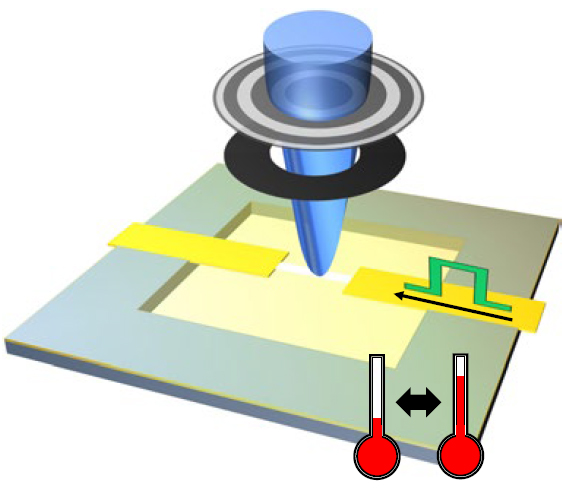Feb 14 2020
The collaborative research project of Johannes Gutenberg University Mainz (JGU) and the Massachusetts Institute of Technology (MIT) earlier demonstrated the application of novel spin structures for next-generation magnetic storage devices. The same collaboration has achieved yet another breakthrough.
 The researchers observed the magnetic skyrmions in an x-ray microscope on a sample of adjustable temperature. Image Credit: Kai Litzius.
The researchers observed the magnetic skyrmions in an x-ray microscope on a sample of adjustable temperature. Image Credit: Kai Litzius.
The focus of the international research team is on structures that could act as magnetic shift registers, what are called racetrack memory devices. Storage of this kind ensures low energy consumption, low access times, and high information density.
The new insights have been reported in Nature Electronics and throw light on the impacts of temperature on the dynamics of skyrmions. The study outcomes show that at higher temperatures, skyrmions travel more efficiently, with their trajectories depending only on their speed. This considerably simplifies the designing of a device.
Skyrmions Could Serve as Data Bits for Racetrack Memory Devices in the Future
The research groups at JGU and MIT visualized billion-fold reproducible motion of skyrmions, a new topologically stabilized spin structure that is a potential candidate for use as data bits in the racetrack device.
The most recent experiments were performed in thin films of magnetic material that stabilize skyrmions at and above ambient temperature. This attribute is essential for any application. As had been shown, at present, the speed of a skyrmion is restricted due to its deformations that must be overcome, probably in antiferromagnetic materials.
This is a great moment as we have worked for a long time to get this study completed. Now that we know that skyrmions can be moved billionfold and at high temperatures that are typical for the insides of a computer, we can focus on tackling the high-speed regime and get the device from its experimental state to being superior to existing storage technology.
Dr Kai Litzius, Study Lead Author, Johannes Gutenberg University Mainz
Litzius performed this study at Johannes Gutenberg University Mainz, including a research stay at MIT. Upon completing his PhD, he moved to the United States to work at MIT as a postdoctoral associate.
Cooperation with Leading International Partners as the Cornerstone of Successful Research
I am very happy to see the next step taken for using skyrmions as magnetic bits in novel devices. The international collaboration with leading partner universities is crucial to enable such work and such collaborations, and exchanges of people are a cornerstone of our graduate education programs.
Mathias Kläui, Professor and Study Corresponding Author, Johannes Gutenberg University Mainz
Kläui continued, “With funding from the German Academic Exchange Service, the Collaborative Research Center CRC/TRR 173 Spin+X, and the Graduate Programs MAINZ – Materials Science in Mainz and MPGC – Max Planck Graduate Center with Johannes Gutenberg University Mainz, we foster these collaborations and exchanges that can be the stepping stone for the next career step.”
Financial support for the MAINZ Graduate School was approved in the 2007 German Excellence Initiative. MAINZ was awarded further financial support for another five years in the second round in 2012.
One of the core research fields of MAINZ was spintronics, a research field where collaboration with pioneering international partners plays a crucial role. The MAINZ Graduate School merged with the Max Planck Graduate Center with Johannes Gutenberg University Mainz (MPGC) in 2019.